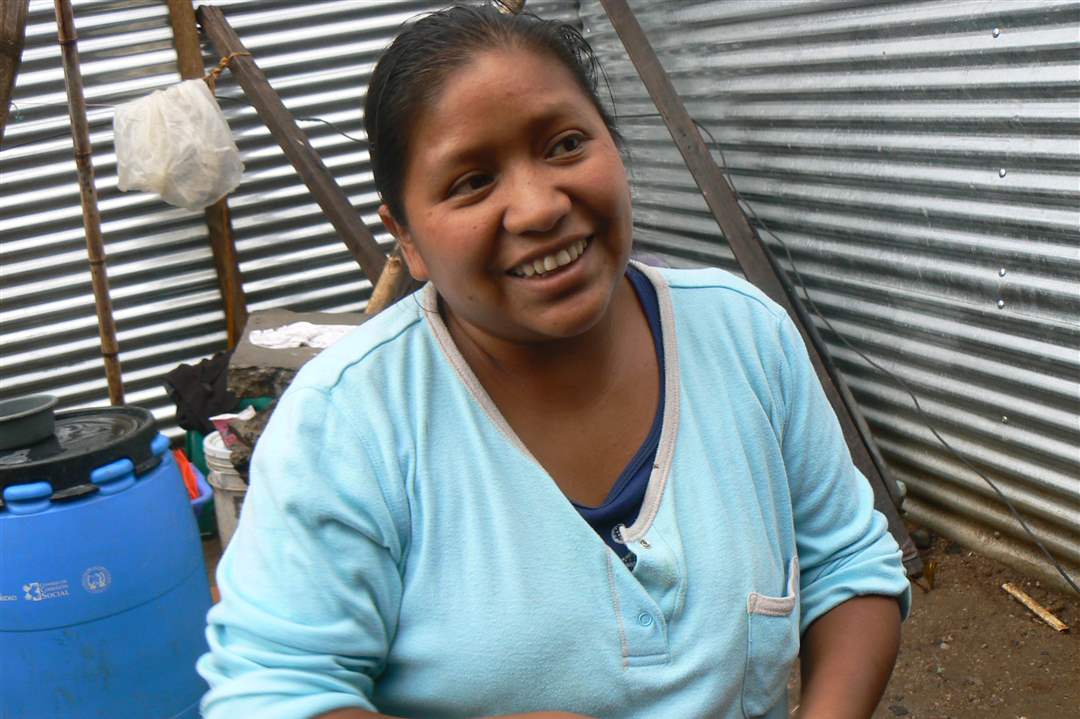
Romelia Suret, 28, smiles in the courtyard of her shack in a dump ghetto known as Sandra de Colon. She, her husband, and three children live in the one-room shack that has no bathroom or running water.
The Blade/David Yonke
Buy This Image
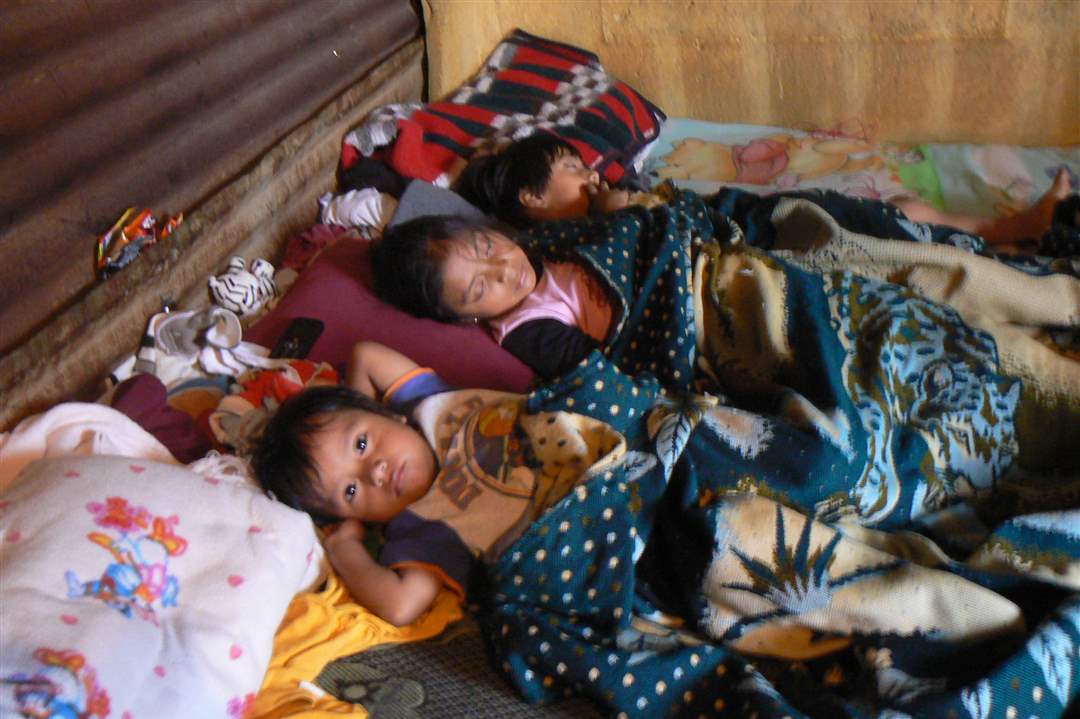
The three Suret children lay in bed on a recent afternoon. Eight-year-old Jennifer, center, was diagnosed with e coli infection.
The Blade/David Yonke
Buy This Image
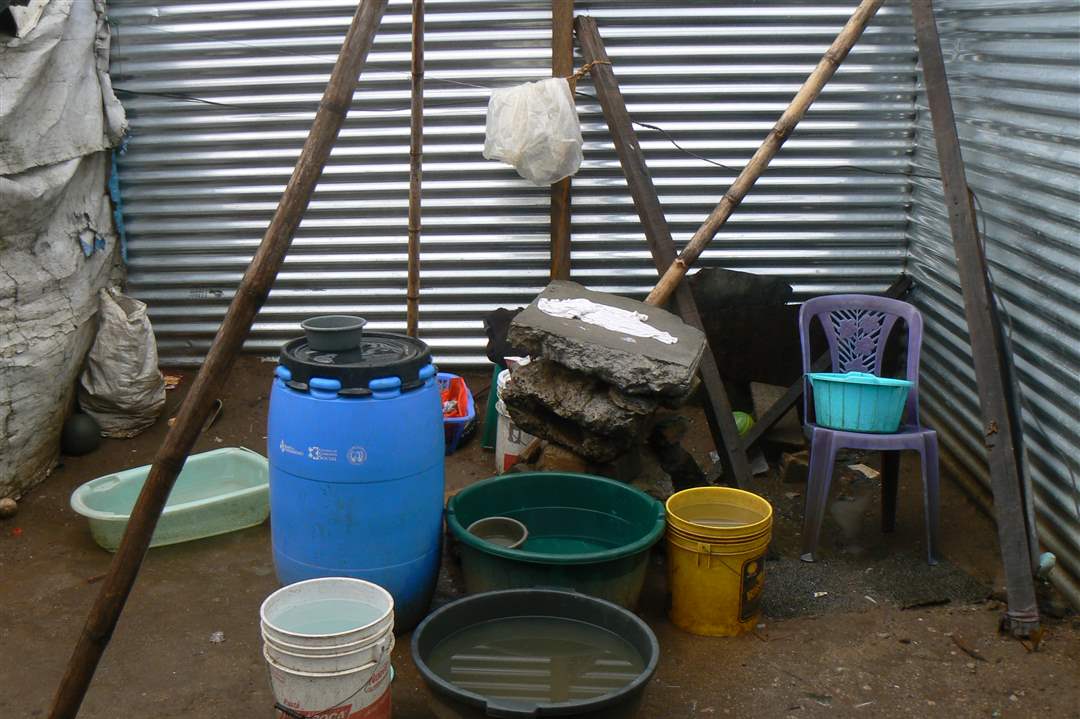
Romelia Suret washes laundry on this flat rock in the courtyard of her family's squatter shack in a Guatemalan ghetto with clean water they purchase by the drum.
The Blade/David Yonke
Buy This Image
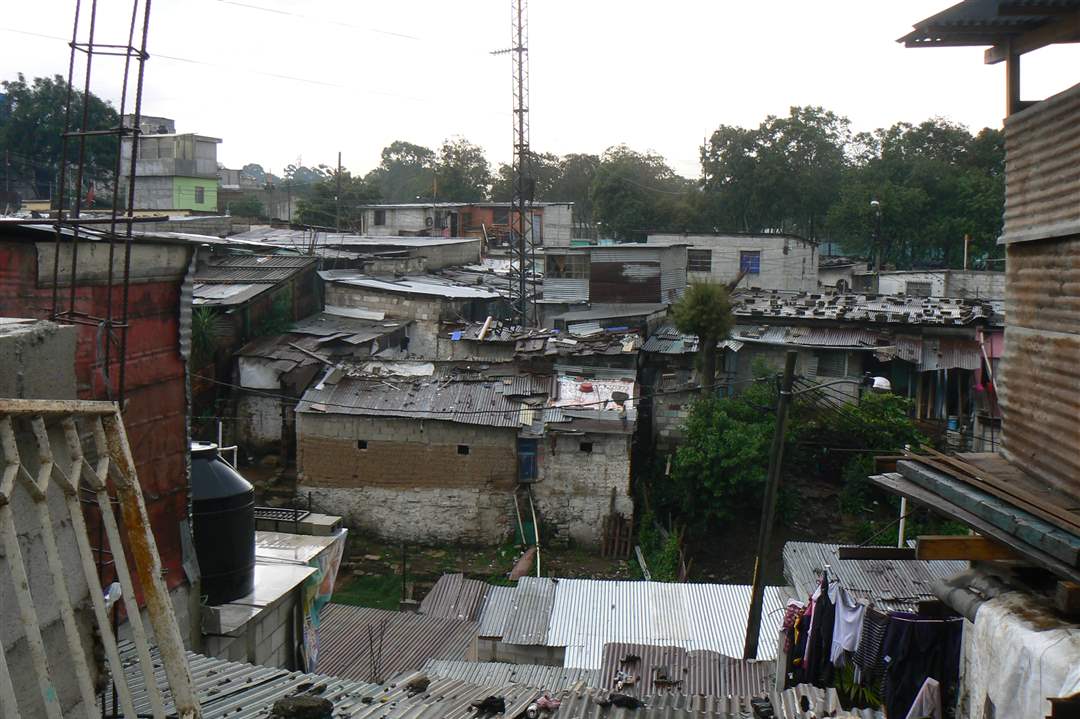
A ghetto neighborhood near the dump is called 14th of October after the day it was settled.
The Blade/David Yonke
Buy This Image
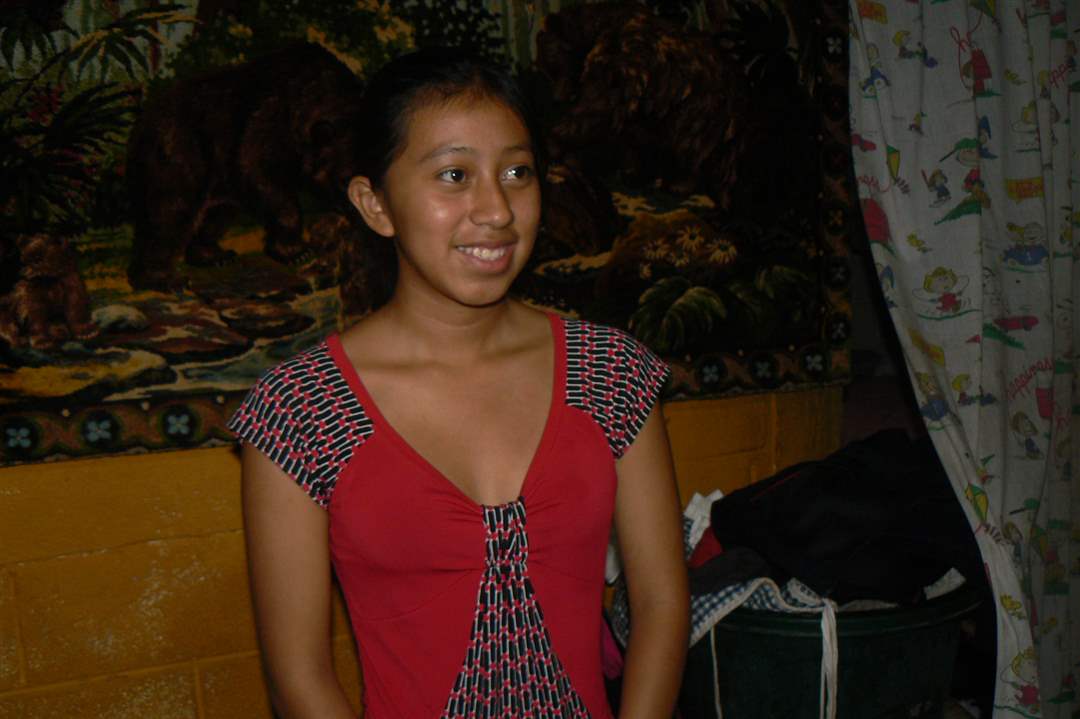
Erica Maritz Chaj, 13, lives in a cement-block home built by International Samaritan. A sixth grade student at Franciso Coll school, Erica wants to be a math teacher. She shares the 520-square-foot house with her mother and six siblings.
The Blade/David Yonke
Buy This Image
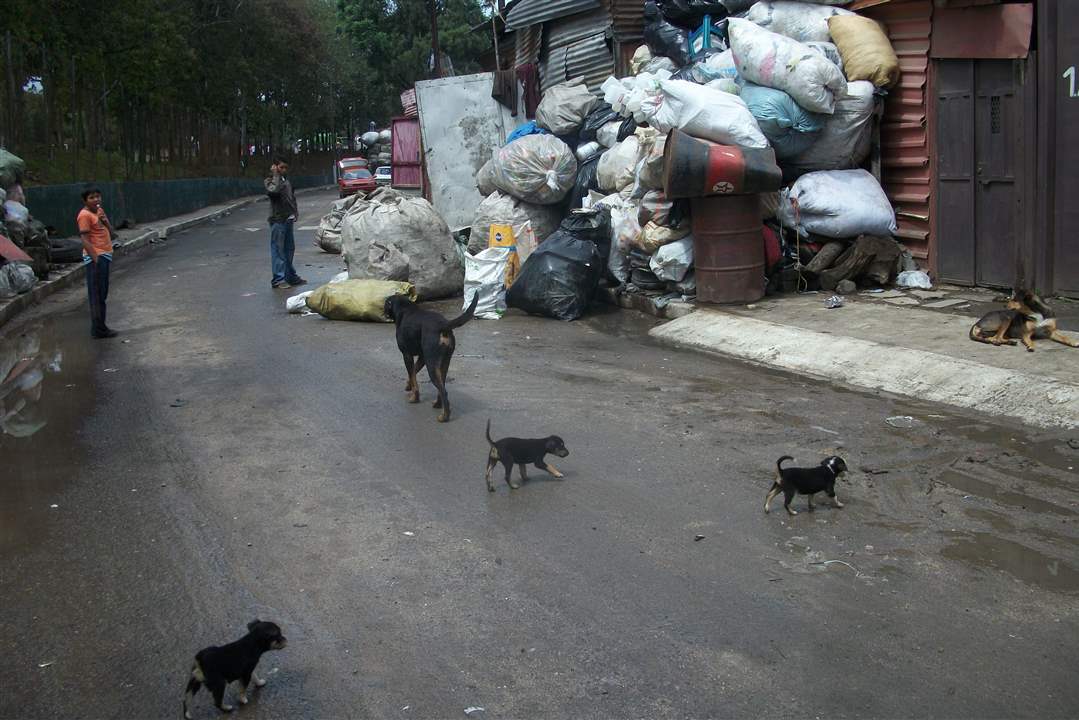
A dog and her puppies roam the streets of Guatemala City's notorious Zone 3, bordering the dump. Middlemen buy the materials salvaged by hand by dump workers and stack them up on the sidewalks, awaiting sale to recycling businesses.
The Blade/David Yonke
Buy This Image
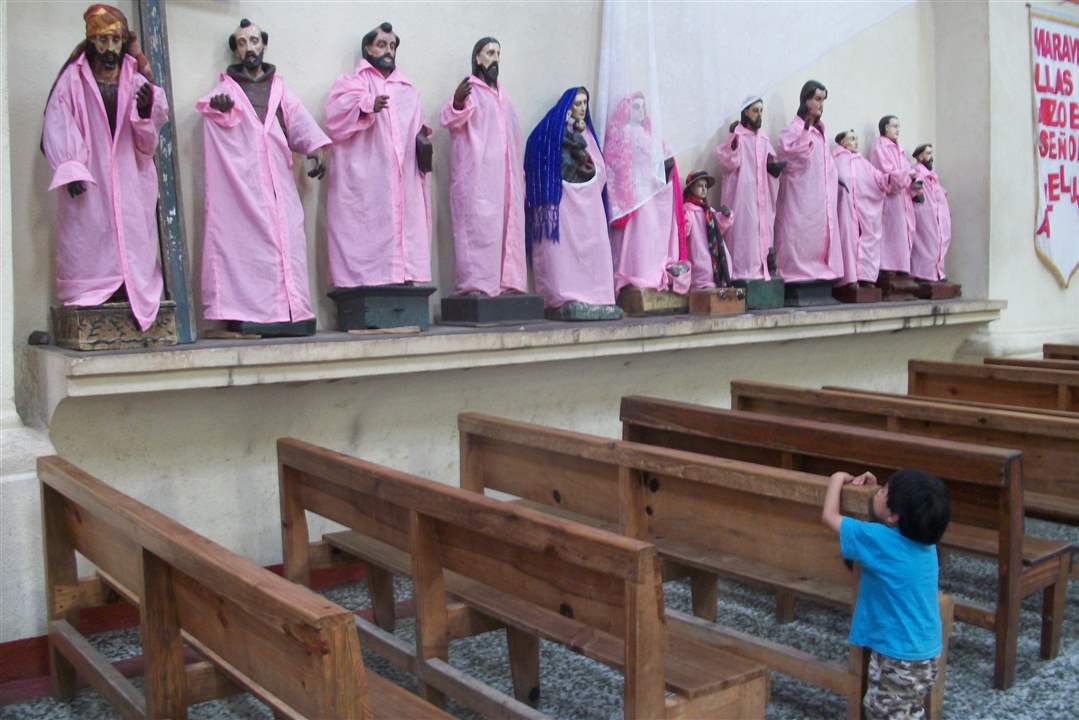
A boy looks at carved wooden statues on a side wall of St. James Catholic Church in Santiago Atitlan. The statues are clothed in outfits made by villagers.
The Blade/David Yonke
Buy This Image
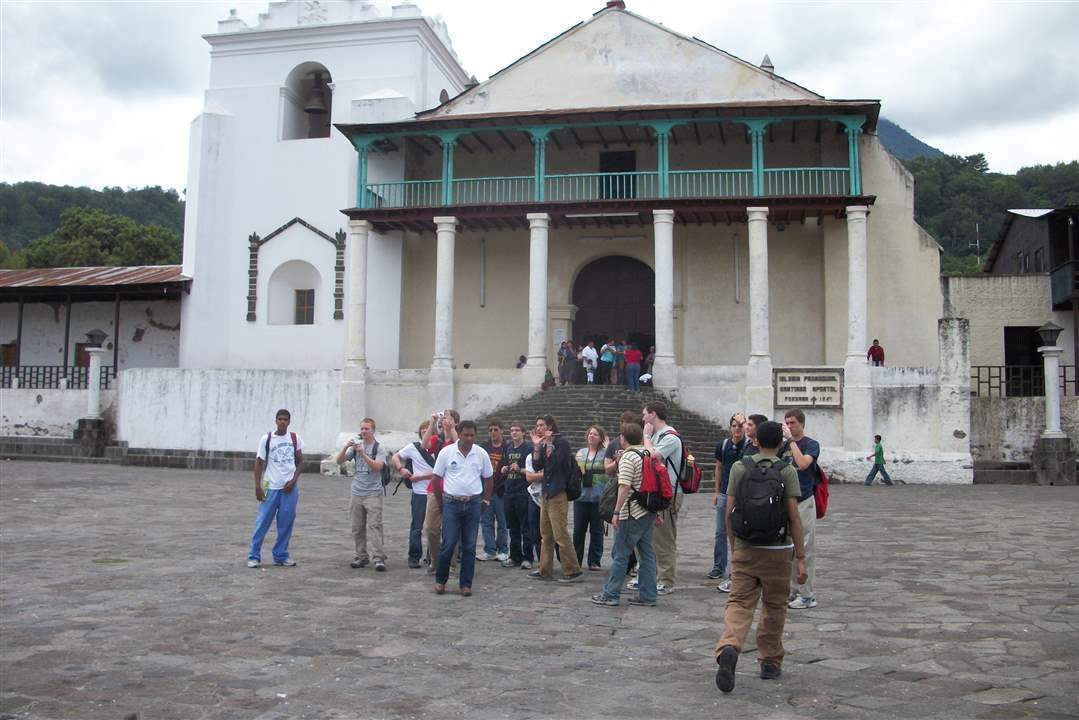
St. John's Jesuit High School students gather in a plaza in front of St. James Catholic Church in Santiago Atitlan, Guatemala. The Rev. Stanley Rother, American priest, was killed by rebels in the church rectory on July 28, 1981.
The Blade/David Yonke
Buy This Image

The 250 cement-block houses built by International Samaritan in a neighborhood near Francisco Coll school known as La Libertad have sewers, running water, and electricity. International Samaritan gives them to families whose children go to its schools. Each house costs between $4,000 and $7,800 to build.
The Blade/David Yonke
Buy This Image
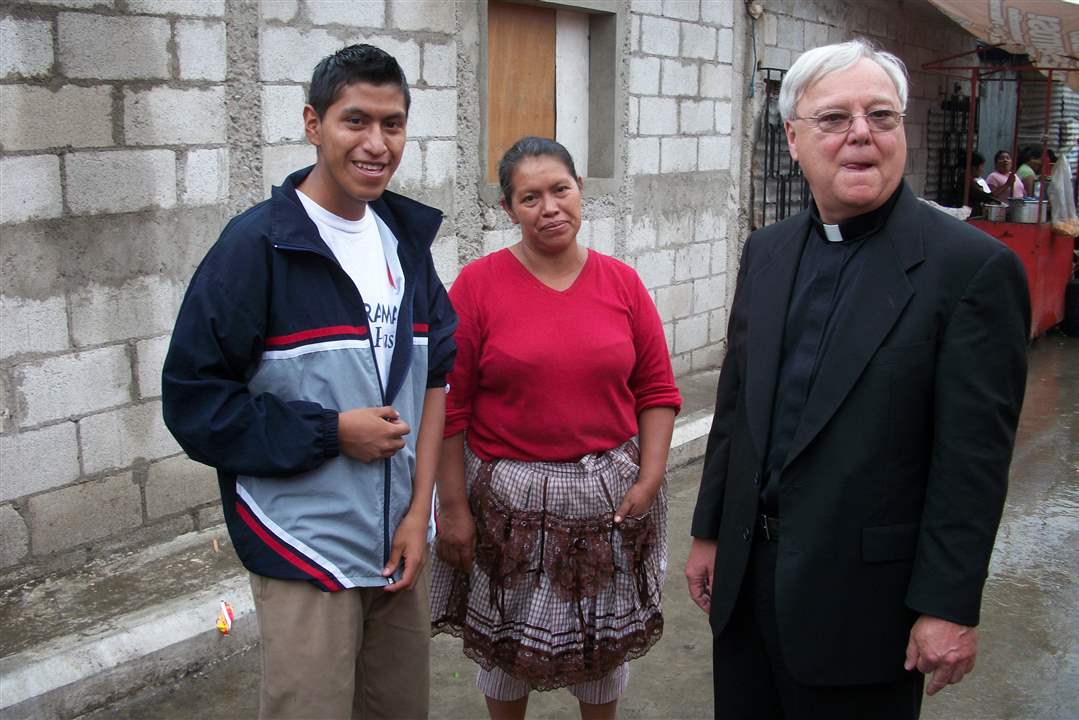
Marvin Yup, 18, his mother Rosa Yup, and Father Donald Vettese meet in the street of La Libertad neighborhood. Marvin is a graduate of International Samaritan's schools, is studying computer technology, and hopes to be a lawyer someday. "When he is a professional, I won't have to work so hard," said Rosa, who works in the city dump.
The Blade/David Yonke / The Blade
Buy This Image
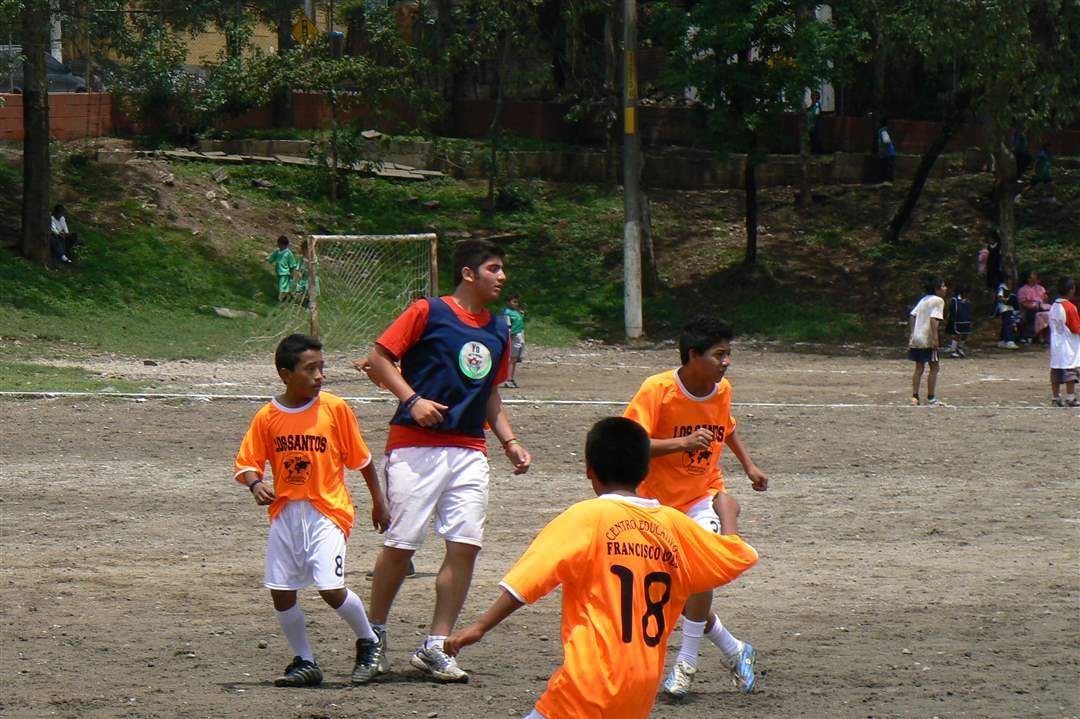
Javier Salas of St. John's High School is surrounded by players from Francisco Coll grade school's soccer team, called Los Santos, or The Saints. The Guatemalan team scored two quick goals but St. John's managed to tie the score 3-3 at the end and then win in a penalty kick shootout.
The Blade/David Yonke
Buy This Image
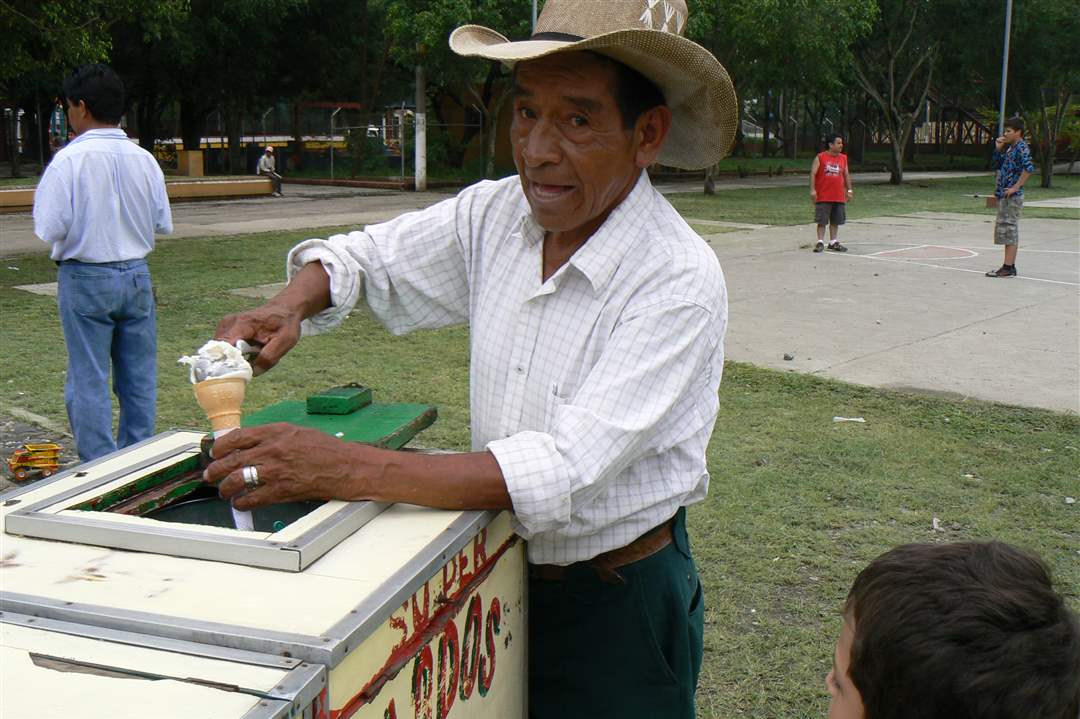
An ice cream vendor sells his wares at the soccer game between St. John's and Francisco Coll students.
The Blade/David Yonke
Buy This Image
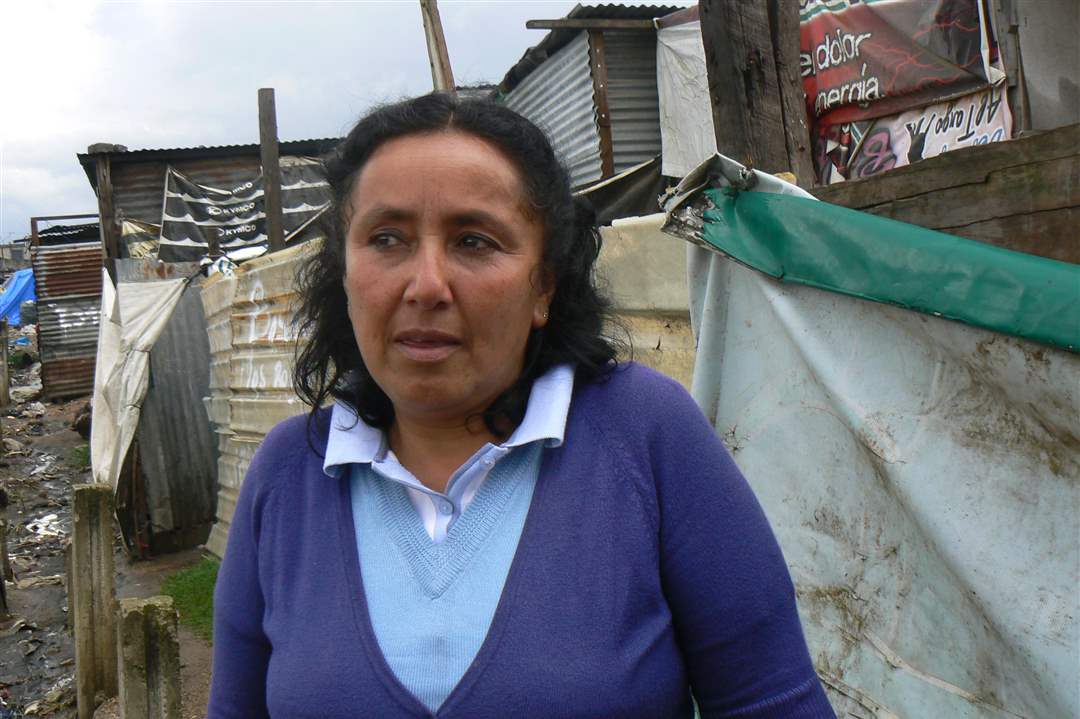
Alta Gracia, 46, talks about the time she was working in the dump and was so starved that she ate meat found in the garbage. The meat was poisoned to kill dogs. She was in a coma for six months and her seven children were hospitalized for three months. She has been working at Francisco Coll school for the past 15 years.
The Blade/David Yonke
Buy This Image
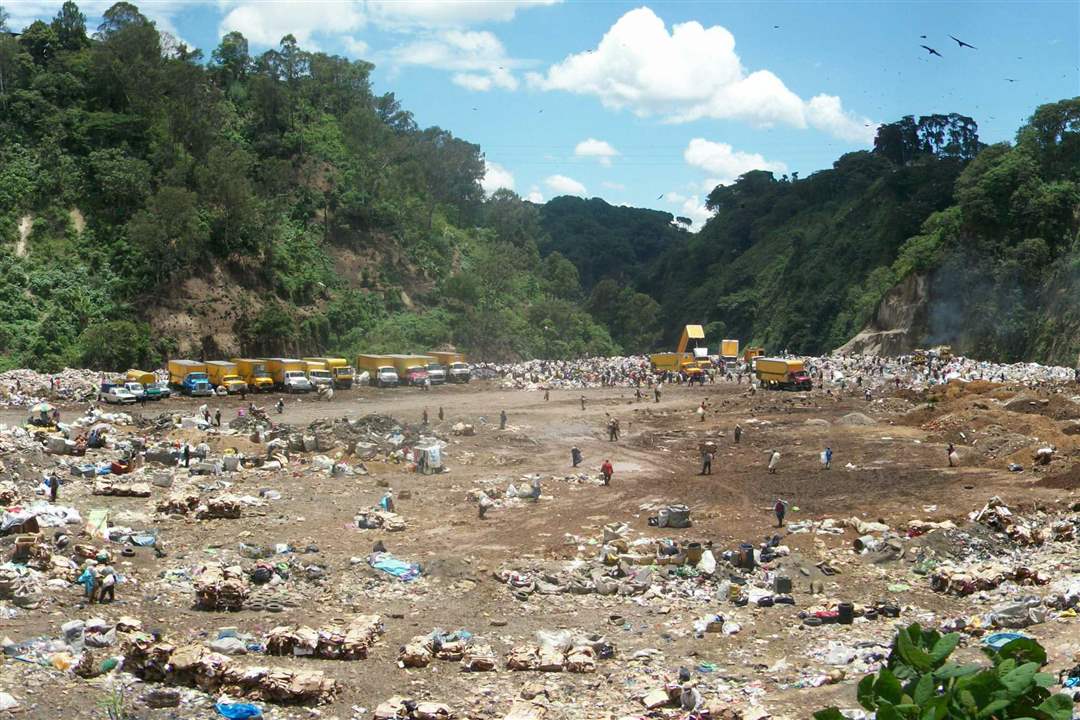
About 650 trucks dump 6,000 tons of garbage into the landfill every day.
The Blade/David Yonke
Buy This Image
